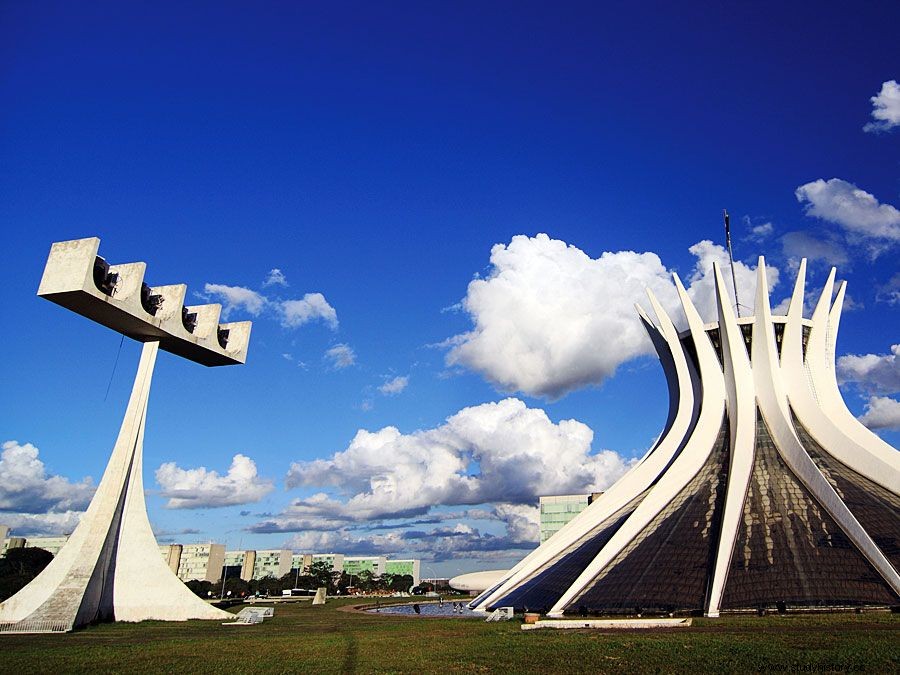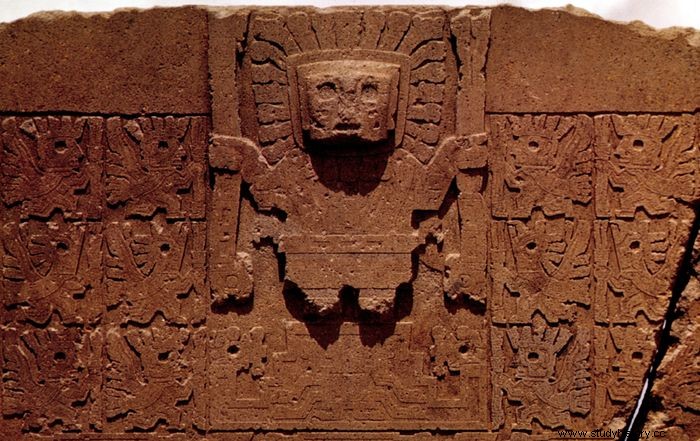Tiwanaku , also Tiahuanaco or Tiwanacu written , an important pre-Columbian civilization known from ruins of the same name located near the south bank of the Titicacasees in Bolivia . The Tiwanaku main site became the UNESCO Added World Heritage List in the year 2000.
 Britannica Quiz Journey to South America:Fact or Fiction? Is the Brazilian capital known for its architecture? Is Argentina a big country? Sort fact from fiction - and learn about climate, capital cities and more on this journey through South America.
Britannica Quiz Journey to South America:Fact or Fiction? Is the Brazilian capital known for its architecture? Is Argentina a big country? Sort fact from fiction - and learn about climate, capital cities and more on this journey through South America. Some scholars date the earliest remains found at this site to the early part of the Early Intermediate Period (c. 200 v . Ch. - 200 n . Chr .); others suggest that the Culture in artifacts from the 2nd millennium v . Chr . obvious is . Probably much of the site, including many important buildings, dates from the second half of the Early Intermediate Period ( 200-600 n. ); However, some construction needs to go into the Middle Horizon ( 600-1000 n. ) continued because during this period Tiwanaku influences can be observed in Huari (Wari) and elsewhere in the central and southern Andes.
Tiwanaku's main buildings include the Akapana Pyramid, a giant platform hill, or a stepped earth pyramid with cut andesite; a rectangular case as Kalasasaya , built of alternating tall stone pillars and smaller rectangular blocks; and another enclosure known as the Palacio. A notable feature of the Kalasasaya is the Monolithic Gate of the Sun , which is decorated with the carved central figure of a staff-carrying door god and other subsidiary figures, sometimes represented as angels or winged messengers be designated. A large number of free-standing carved stone figures were also found at the site. Distinctive pottery is a flared mug shape painted with black, white, and bright red depictions of cougars, condors, and other creatures on a dark red base. It has been speculated that people , the magnificent Tiwanaku - Complex built whose culture was gone by ad 1200, were the ancestors of today Aymara Indians of the highlands of Bolivia.

In the late 20th century, archaeologists discovered new information about the Tiwanaku site. Formerly thought of as a largely ceremonial site, the area has since been revealed as a once bustling metropolis, the capital of one of the greatest and most enduring civilizations of the ancient world. However, relatively little is known about it. Tiwanaku's influence was largely a result of its remarkable agricultural system. This cultivation method, known as the upfield system, consisted of raised planting areas separated by small irrigation ditches or canals. This system was designed so that on frosty nights on the Altiplano, the channels retained the heat of the intense sunlight, preventing the plants from freezing.
During the height of his power, Tiwanaku dominated or influenced much of what is now eastern and southern Bolivia, northwestern Argentina, northern Chile, and southern perus The revived use of the upland system by some Bolivian farmers in the late 20th century led to an increase in agricultural production.
